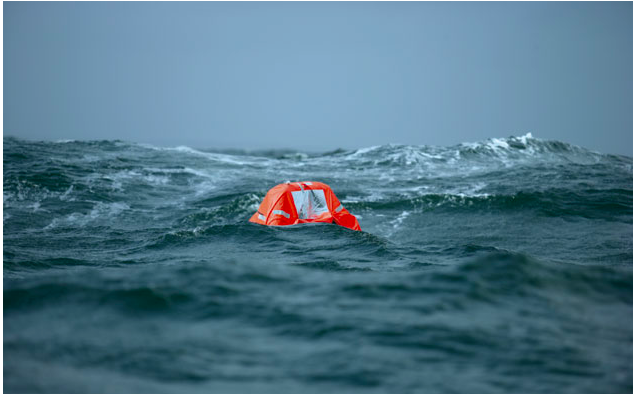If you’re cruising offshore, let’s hope you have a life raft stowed somewhere on your boat. If the worst happens – your boat hits a whale or shipping container, a fire starts in the galley or engine room, a freak wave swamps the boat – you certainly want a raft to keep you and your crew afloat. But what is life actually like once you’re in the raft and free of the mothership? To find out, two editors from Yachting Monthly launched a raft from a simulated sinking ship in the Bay of Biscay.
The two men were on a four-man raft and they were “rescued” before nightfall. This timeframe is not unrealistic. Due to modern technology – EPIRBs in particular – most people are rescued within 24 hours of stepping aboard a raft (or sending out a distress signal). But what they reported was telling: After the initial adrenaline rush wore off, they were hit by both nausea and lethargy. The continual foreign motion of the raft was unsettling: “Imagine lying on a waterbed in a tent pitched on a giant jelly.” Then they were wet and cold.
But what they learned was that a drogue helped considerably in both reducing drift and preventing a capsize, and they emphasized the importance of a having a ditch bag with them, complete with EPIRB, GPS, VHF and lots of extra batteries. For their complete story, read here: http://www.yachtingmonthly.com/sailing-skills/life-in-a-liferaft-2-28955




